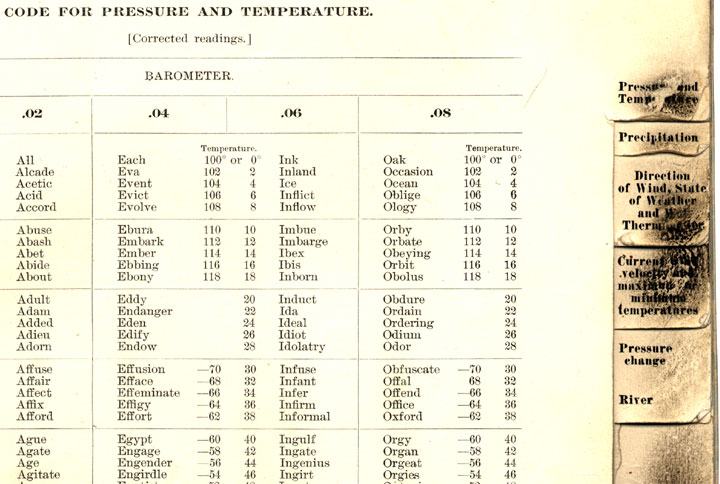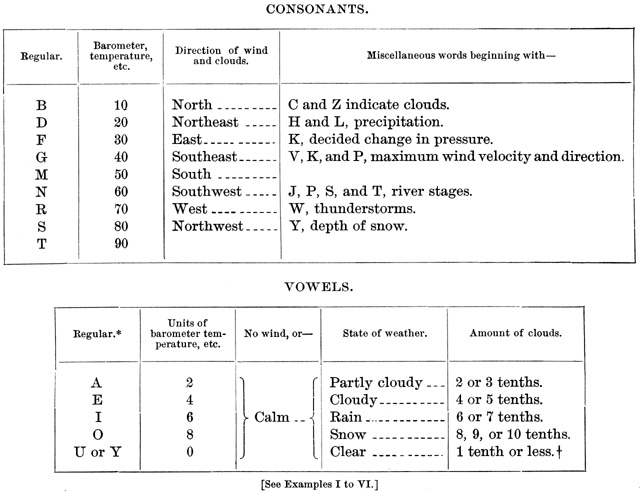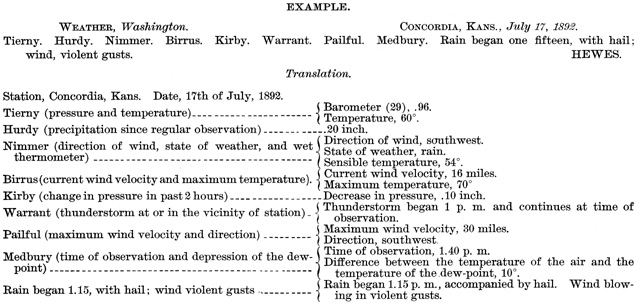14. In deciphering, it will be noticed that words beginning with vowels indicate that the value under consideration is less than .10, or calm, etc. In cases where the temperature, etc., is less than 10°, etc., it should be noticed that the consonant immediately preceding the second vowel is one which has no value in the code, that is, it is neither B, D, F, G, M, N, R, S, nor T, and consequently is to be ignored in translating.
One needs to see and study the "tables," in order to develop confidence that translation can be achieved without the book. It is done by meticulous, step-by-step, ergodic construction of a message.
Some stations adjusted their reports for local conditions, e.g., proximity to a major (floodprone) river. Moreover, reports from stations in cotton, sugar and rice regions, and in corn and wheat regions, forwarded their reports to section centers where, to take the example of the former case, mean maximum and minimum temperatures, and rainfall might be averaged and then sent out over regional circuits.
Six examples on pages 23-24 illustrate the use of the code in different circumstances and meeting different requirements.
- Example 1.—Regular 8 a.m. report.
- Example 2.—Regular 8 a.m. report from a river station where cirrus clouds were observed moving from an abnormal direction previous to the observation and all the precipitation occurred before 8 p.m. the previous day.
- Example 3.—Regular Tuesday morning report, in winter, from a station instructed to send snow and ice data, but that does not telegraph 8 p.m. reports.
- Example 4.—Regular 8 p.m. report.
- Example 5.—Regular 8 p.m. report for the last day of the month.
- Example 6.—Regular 8 a.m. report when there is no wind, state of weather clear, no precipitation, the minimum temperature recorded twelve hours previous was lower than at the current observation and cirro-stratus clouds were observed within one hour previous.
A separate example is given on page 22 of a coded report of "special observations," which is presented below —
| 

